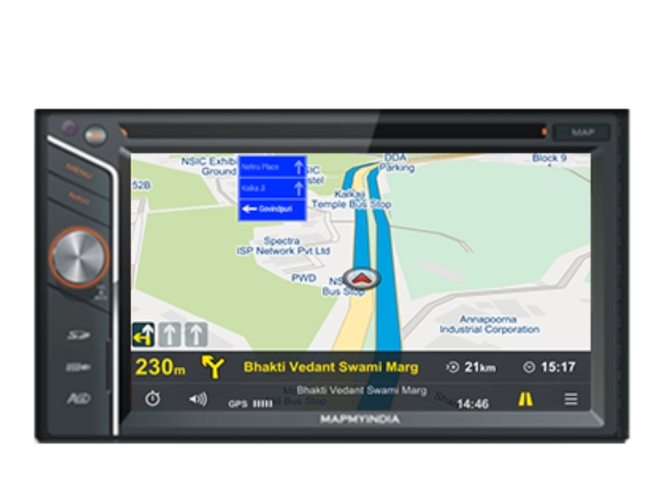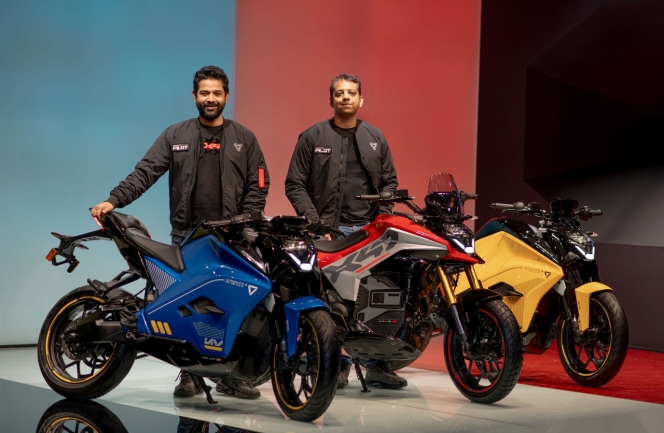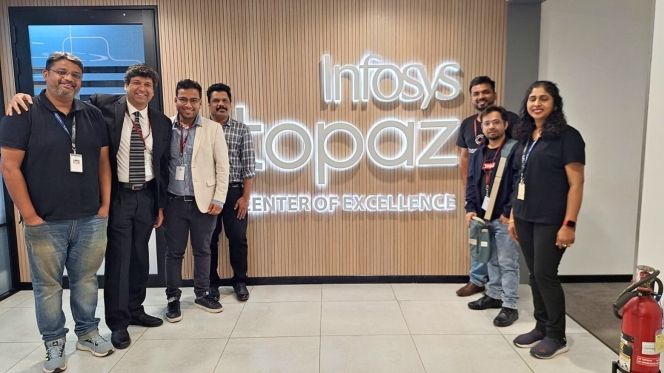Igus India Expands Presence With New Manufacturing Plant
- By Gaurav Nandi
- August 22, 2024

Motion plastics manufacturer, Igus India expanded its footprint in the country by inaugurating a new manufacturing plant spanning 92,000 square feet in Bengaluru Thursday.
The state-of-the-art plant in Mandur near Budigere in Bengaluru comes at a point when the company prepares to focus on new divisions dedicated to the semi-conductor and renewable energy sectors, areas poised for substantial growth. The expansion is part of Igus’s long-term strategy to enhance its operational capabilities and support its extensive customer base in India.
The newly inaugurated facility is a testament to the company’s long-term commitment to India, involving an investment of over INR 1 billion. This financial outlay reflects the company’s dedication to maintaining its competitive edge through innovation and cutting-edge technology.
Of the total investment, INR 200 million have been allocated for setting up the factory, INR 400 million for advanced injection moulding machines and INR 200 million for enhancing the manufacturing process. The plant’s infrastructure is designed to meet the high standards of motion plastics production, ensuring that Igus India continues to deliver world-class products tailored to the unique demands of the Indian market.
Since its establishment as a wholly-owned subsidiary in 2000, Igus India has become a prominent player in the motion plastics industry, catering to over 19,000 customers across the country. The company’s extensive product catalogue boasts 125,000 parts, which are used in a variety of customer-driven assemblies, many of which are customized and assembled locally. This vast array of products underscores Igus’s commitment to innovation and customer satisfaction, with over 200 new products introduced annually. The company’s ability to adapt to the evolving needs of its customers has been a key driver of its success in the competitive Indian market.
Looking ahead, Igus India has ambitious plans to further strengthen its operational capabilities and market presence. The company is eyeing significant revenue growth, with expectations of reaching INR 3.4 billion in revenue this year. To support this growth and enhance its logistical efficiency, Igus India plans to establish new logistics and assembly centres in Pune, Gurugram and Noida. These new facilities will enable Igus to better serve its customers across India, reducing lead times and improving overall service delivery.
The focus on emerging industries like semi-conductors and renewable energy is a strategic move by Igus India to align itself with sectors that are poised for substantial growth in the coming years. As India continues to invest in its semi-conductor manufacturing capabilities and renewable energy infrastructure, the demand for high-quality motion plastics is expected to rise. Igus India’s expansion positions the company to capitalise on these opportunities, offering innovative solutions that meet the specific needs of these rapidly growing industries.
The opening of the new manufacturing facility in Bengaluru marks a significant milestone for Igus India, reinforcing its position as a leader in the motion plastics industry. With a strong commitment to innovation, customer satisfaction and market expansion, Igus India is well-positioned to achieve its growth objectives and continue delivering value to its customers across the country.
Emphasising the strategic importance of this expansion, Igus India Managing Director Deepak Paul stated, “The Indian market presents tremendous potential for Igus as demonstrated by our continued growth and investment here. Our objective is to deliver cutting-edge products and solutions not only to our customers in India but also on a global scale. Igus’s global focus on cost-sensitive and sustainable solutions, encapsulated in our motto ‘Tech up, cost down,’ is perfectly aligned with the Indian approach to technology and innovation. This alignment has been a key driver of our significant growth in the country. As we look forward, our plans include expanding beyond Bengaluru, with logistics and assembly centres set to be established in Pune, Gurugram, and Noida.”
Igus India is currently the 6th largest subsidiary among Igus’s 38 global subsidiaries, a position that reflects its strong performance and growth potential. Over the past two years, Igus India has doubled its market growth, with revenue figures climbing from INR 1.99 billion to INR 3.13 billion. The company expects this upward trajectory to continue. Additionally, Igus India has invested in a clean room testing facility in Germany and plans to establish a similar setup in India, further enhancing its product development and quality assurance capabilities.
Commenting on the occasion, Country Manager and Director Santhosh Jacob said, “Technology and innovation are at the core of everything we do at Igus. With a catalogue of 125,000 parts and 247 new products introduced this year, we are constantly inspired by our customers’ needs to push the boundaries of what is possible. Our ongoing expansion of the motion plastics product world, coupled with the integration of digitalization and AI, is a testament to our long-term corporate strategy. We are making significant progress in embedding digitalization as a key technology at Igus, which will play a crucial role in our future growth and success.”
Neusoft And MapmyIndia Partner For Intelligent Mobility Solutions
- By MT Bureau
- December 06, 2025

Chinese technology company Neusoft Corporation and Mappls MapmyIndia have signed a Memorandum of Understanding (MoU) to leverage their strengths in software and data resources to collaborate deeply.
The companies will engage in joint technological development, ecosystem collaboration and resource integration to provide navigation products and intelligent mobility solutions tailored to localised needs in emerging markets such as Southeast Asia and India.
The partnership is a response to the fact that while global auto brands are expanding into Southeast Asia and India, they face challenges in these regions due to complex road conditions, unique traffic rules, extensive addressing systems and high localisation adaptation costs. These issues limit the ability of automakers to deliver a complete intelligent user experience.
Under the collaboration, Neusoft will adopt its OneCoreGo Global Intelligent Mobility Solution 6.0 Plus as the core technology carrier, deeply integrating MapmyIndia's map data, real-time traffic information and multi-dimensional value-added services. MapmyIndia is noted as the largest local mapping company in India, holding more than 90 percent market share in in-vehicle navigation.
The integration is intended to strengthen a full capability loop of ‘navigation + payment + interaction + connectivity + operations’.
Through API integration and technological convergence, the two parties will jointly develop navigation products and mobility solutions highly adapted to Southeast Asia, India and similar regional markets. These solutions will deliver precise route planning and real-time traffic guidance, address local user needs and continuously enhance product experience and scenario-based services. This will help automotive partners rapidly launch intelligent vehicle models with competitiveness in local markets.
The partnership enables Neusoft to combine the global end-to-end strengths of its solution with localised ecosystem resources, paving the ‘last mile’ for automakers entering the Southeast Asian and Indian markets and delivering comprehensive intelligent mobility experiences.
- Ultraviolette Automotive
- Zoho Corporation
- Lingotto
- F77
- X-47
- Shockwave
- Tesseract
- Narayan Subramaniam
- Niraj Rajmohan
Ultraviolette Secures $45 Million Growth Capital From Zoho And Lingotto
- By MT Bureau
- December 04, 2025

Bengaluru-based electric vehicle maker Ultraviolette Automotive has secured USD 45 million from Zoho Corporation and Lingotto, one of Europe's investment management companies as part of its ongoing Series E investment round.
The investment from Zoho Corporation was led by Sridhar Vembu, Mani Vembu and Kumar Vembu.
This growth capital will accelerate the domestic and international scale-up of current products F77 and X-47, as well as future product platforms Shockwave and Tesseract.
Ultraviolette has built a design and technology-led enterprise with the F77 and the recently launched X-47.
The company has expanded to 30 cities across India in a short span of 12 months and is expanding to 100 cities by mid-2026. The F77 motorcycles were recently launched in the United Kingdom, bringing Ultraviolette's presence to 12 countries across Europe.
Narayan Subramaniam, Co-Founder & CEO, Ultraviolette Automotive, said, “We are glad to announce our Series E investment from Zoho and Lingotto. Lingotto's legacy of backing iconic performance and mobility brands, combined with Zoho's long-term commitment to fostering cutting-edge Indian innovation, aligns perfectly with Ultraviolette's mission to build category-defining electric mobility solutions for India and global markets.”
Niraj Rajmohan, CTO & Co-Founder, Ultraviolette, said, "With the ongoing Series E investments, we are doubling down on growth and expanding our production to meet increasing demand. Our focus is on advancing breakthrough battery technology, elevating performance capabilities and expanding production to support upcoming product platforms. This investment will accelerate our journey towards scaling into India and global markets."
Disseqt AI Partners Tata Technologies And Infosys For Agentic AI Adoption
- By MT Bureau
- December 04, 2025

Agentic AI platform Disseqt AI has announced a partnership with Tata Technologies and Infosys. As per the agreement, Disseqt AI will assist both companies' IT and DevOps teams in developing and fast-tracking the production of tailored Agentic AI applications for automobile and FinTech companies globally.
The partnership aims to help auto and FinTech firms embrace customised Agentic AI faster and in a secure manner.
Disseqt AI, which has operations in Bengaluru, San Francisco and Dublin, provides an enterprise-grade platform for IT and DevOps teams. The company claims its platform cuts down Agentic AI testing and operations cost by 70 percent and improves productivity by up to 80 percent. The platform allows these teams to test, simulate and monitor their Agentic AI systems tailored across industries, ultimately enabling enterprises to operationalise tailored Agentic AI faster and at scale, without sacrificing ethics, governance and compliance.
Apoorva Kumar, Founder and CEO, Disseqt AI, said, “This is a landmark announcement for us as we further embed Disseqt into enterprise workflows for testing, simulation, monitoring and auditability purposes. We are already working closely with both Tata and Infosys on several projects and are proud to be part of their innovation initiatives”
Last month, Disseqt AI announced a strategic collaboration with HCLTech and Microsoft to guide financial services institutions with Agentic AI adoption.
Battery Passport Implementation Beyond EVs To Be Focus Of Barcelona Event
- By MT Bureau
- December 03, 2025

Battery and Energy Storage Europe has announced a programme focused on the EU Battery Passport, a regulatory milestone that becomes mandatory in February 2027. The Barcelona-based event will address the compliance gap for applications beyond the electric vehicle (EV) sector, which have dominated the conversation to date.
The event, taking place on 8th and 9th September 2026 at Fira de Barcelona's Gran Via venue, will focus on solutions and talks for applications that fall within the regulation's scope: stationary energy storage, industrial batteries, grid-scale systems, long-duration energy storage and emerging applications in aerospace, maritime and rail electrification.
With the February 2027 legal requirement date approaching, the programme will bring together industry leaders, technology providers, and policy experts to address the compliance challenges facing these diverse sectors.
The Battery Passport is a digital record documenting a battery's entire lifecycle, from raw material sourcing to production, performance and eventual recycling. From February 2027, it becomes mandatory for all rechargeable EV, industrial and LMT batteries over 2 kWh sold in the EU.
Linked via QR code, the passport will track each battery's complete lifecycle, including composition, carbon footprint and recycled content, fundamentally transforming supply chain transparency and sustainability practices across Europe.
The programme will explore implementation topics including digital infrastructure requirements, data management systems, supply chain integration, verification processes and recycling traceability.
Ken Davies, Conference Programme Director at Battery and Energy Storage Europe, said, "The Battery Passport represents one of the most significant regulatory shifts our industry has faced, yet many companies are still grappling with what implementation actually means for their operations. While the EV sector has dominated the conversation, there's a critical need to address how this regulation applies to stationary storage, industrial applications and the innovative battery technologies powering Europe's energy transition. With the clock ticking toward February 2027, Battery and Energy Storage Europe will shine a light on the practical implementation requirements for these often-overlooked sectors, connecting stakeholders with actionable solutions and bringing together the expertise, technology providers, and collaborative spirit needed to turn compliance into competitive advantage across the full spectrum of battery applications."





Comments (0)
ADD COMMENT